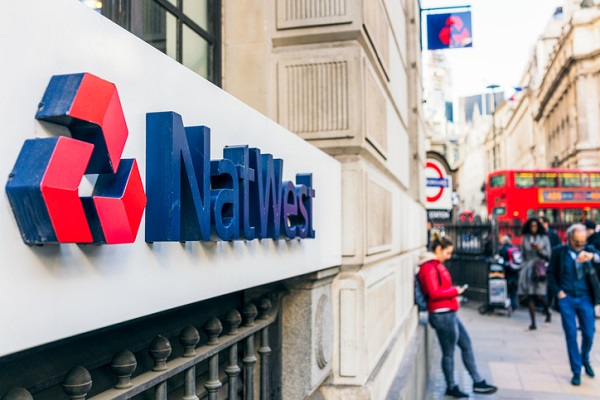NatWest shows why it's the preferred play in the bank sector
29th April 2022 08:08
by Richard Hunter from interactive investor
High street lender NatWest brings this UK bank reporting season to a close with a big boost to profits and encouraging progress elsewhere.

NatWest Group (LSE:NWG)has brought the curtain down on the bank sector first quarter reporting season in some style, with progress being seen virtually across the board.
In addition, the bank is also the first during this quarter to announce a credit impairment release, as opposed to the return to provisions for each of its UK peers. While the release of £38 million is not significant and compares with a number of £98 million in the previous year, it nonetheless marks NatWest out as a group which is comfortable with its projections, notwithstanding the economic pressures to come.
It also reflects a group awash with capital, which is being deployed to drive sustainable growth, while also keeping a sharp eye on costs, as evidenced by a quarter-on-quarter reduction in operating expenses of 4.6%, and an overall improvement to a cost/income ratio which now stands at 59.7%, as compared to 69.2% in the corresponding period.
- Lloyds Bank upgrades and Standard Chartered fan club grows
- Barclays manages profits beat despite mega fine
- Lloyds Bank beats expectations in Q1 and issues upgrade
- 60 reasons to sell your UK shares
Amid the capital strength, another milestone was achieved in the quarter as NatWest bought back £1.2 billion of shares from the UK government, reducing the stake to minority ownership at 48%. This is the first time since the bailout that this has been possible, on a government stake which peaked at 84%. The remining holding remains an overhang on the shares, but progressively less so and is another indication of the bank’s strengthening capital position.
Alongside regulatory changes as noted by its peers and the share buyback from the government, the CET1 ratio, or capital cushion has fallen to 15.2% from 18.2%, which remains comfortably in excess of the required target. Similarly, the Liquidity Coverage Ratio also dipped due to the buyback as well as lending outstripping growth in customer deposits. Even so, the remaining headroom totals £83 billion, which is a significant buffer.
The rest of the metrics also show strong progress, with an improvement in Net Interest Margin to 2.46% from 2.32% reaping the benefit of rising interest rates. Net lending also increased by 2%, driven by an even split between retail mortgage growth and a spike in commercial and institutional lending. The Return on Tangible Equity also increased to 11.3% from 7.9%, and in the “Go-forward group”, whereby the bank excludes discontinued operations such as Ulster Bank, the number rose to 11.9% from 8.5%.
Taken together, and propelled by a rise of 16.8% in total income, the group recorded a pre-tax profit of £1.25 billion, which compares to a number of £885 million in the previous year. In terms of outlook, the bank has also marginally upgraded its income forecast for the year to come.
- HSBC fails to excite with these first quarter results
- Insider: two FTSE 250 stocks tipped to recover
- Where to invest in Q2 2022? Four experts have their say
Progress at NatWest remains measured, but increasingly visible, and the share price has reacted by rising 9.5% over the last year, as compared to a gain of 8% for the wider FTSE100. On a two-year basis, the price has spiked by 94% but remains down overall by 7% over the last three, underlining the scope for further improvement.
In the meantime, a generous dividend yield of 4.7% means that shareholders are effectively being paid to wait for a more pronounced recovery, while the market consensus of the shares as a "strong buy" lifts NatWest to being the preferred play in the sector at present, which has not been the case for some considerable time.
These articles are provided for information purposes only. Occasionally, an opinion about whether to buy or sell a specific investment may be provided by third parties. The content is not intended to be a personal recommendation to buy or sell any financial instrument or product, or to adopt any investment strategy as it is not provided based on an assessment of your investing knowledge and experience, your financial situation or your investment objectives. The value of your investments, and the income derived from them, may go down as well as up. You may not get back all the money that you invest. The investments referred to in this article may not be suitable for all investors, and if in doubt, an investor should seek advice from a qualified investment adviser.
Full performance can be found on the company or index summary page on the interactive investor website. Simply click on the company's or index name highlighted in the article.